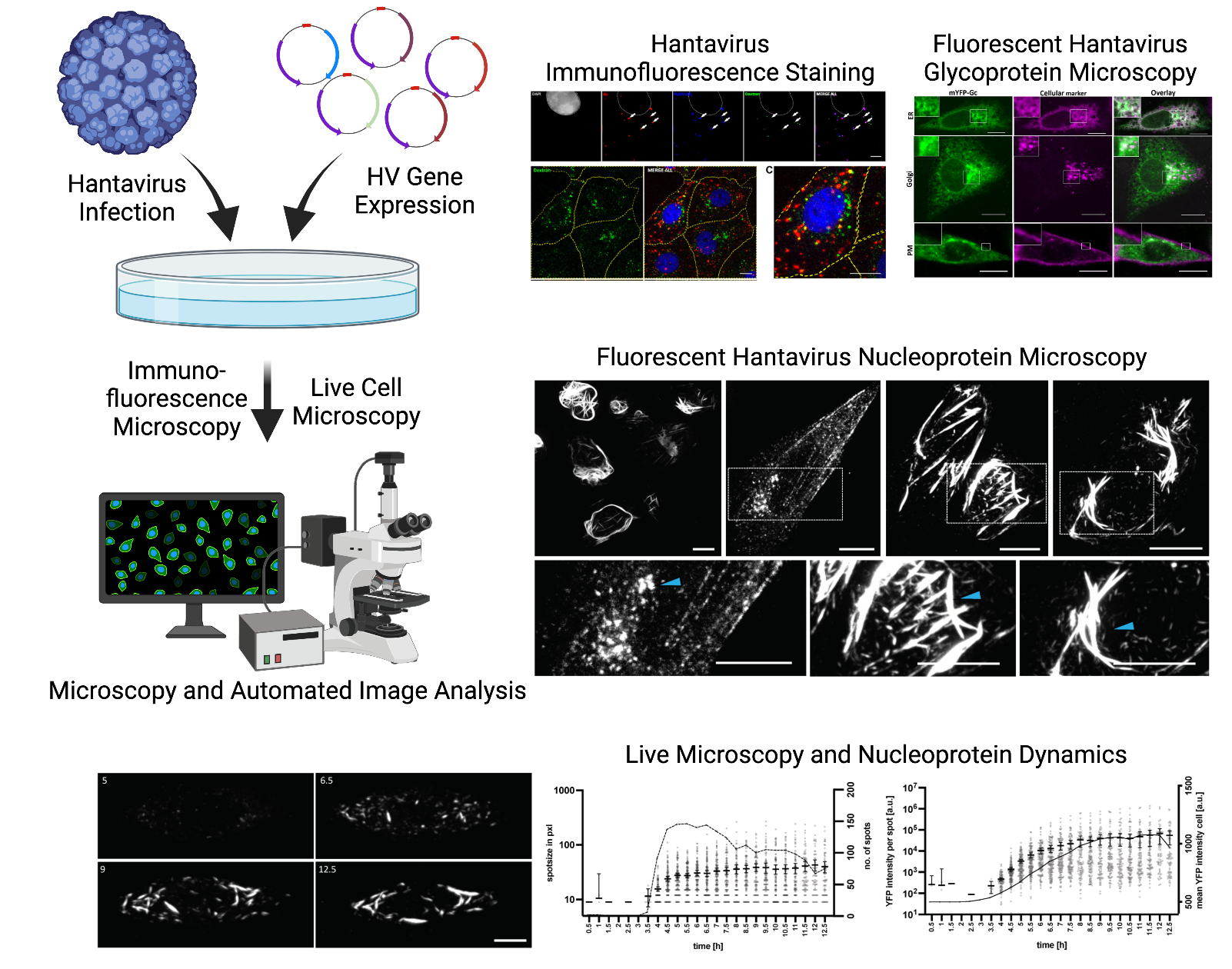Emerging Virus Research
The World Health Organization (WHO) defines emerging viruses as pathogens, which have either manifested in a population for the first time, or shows rapidly increasing incidence or geographical spread.
Orthoaantaviruses (HV) are a family of enveloped RNA viruses that can cause severe diseases in humans. HVs are zoonotic pathogens and are considered emerging viruses with increasing cases numbers around the globe. Natural host of HVs are small mammals like rodents, shrews and bats. Humans are typically infected through inhalation of excreta from infected animals and whereas their natural host and HVs are mutually well-adapted, human infections typically produce significant symptoms, causing diseases with case fatalities of up to 60%.
HVs comprise a tri-segmented negative strand RNA genome, which encodes for only 4-5 proteins: the two glycoprotein Gc and Gn, the nucleoprotein N, the RNA dependent RNA polymerase (RdRP) and in some cases a non-structural protein NSs. The function of the viral glycoproteins is at least twofold: they are responsible for cell binding and membrane fusion during virus entry, but they are also key factors in the formation of viral particles during assembly and budding. The nucleoprotein on the other hand complexes with viral, genomic RNA (vRNA) and is involved in viral cap-snatching, which is crucial for hantavirus replication. RdRP is the largest HV protein and the only enzyme, replicating the viral RNA genome in the cytoplasm of infected cells. Finally, NSs is having accessory functions, likely manipulating antiviral responses through meddling with Interferon expression.
Goal of our research is to provide an in-depth understanding of host-pathogen interactions during hantavirus infections. We are using interactomics, CRISPR technologies and high resolution, quantitative microscopy to thoroughly explore, dissect and characterize cross-talk between virus and infected cell in order to better understand the host factors that are critically involved in hantavirus life cycles. Ultimately, we believe that this approach will add to our understanding of hantavirus infections in general, but it may also inform the development of novel, host-directed antiviral strategies or diagnostic markers.

Research Statement: Currently, we investigate intracellular dynamics and interactions of Orthohantavirus (HV) proteins. We are particularly interested in crosstalk between HV proteins and cyctoskleleton components, as well as cellular p bodies. Ultimate goal of our work is to contribute to the development of new antiviral approaches. (Images adapted from Bauherr et al , Sperber and Welke et al and Welke and Sperper et al).

